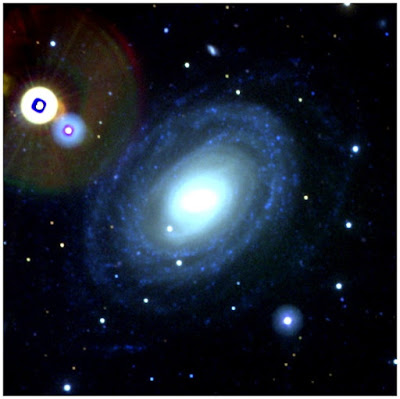Dark Energy May Fade to Black
First, a word of caution. We keep seeing how materialists get all excited and shoot holes in the saloon ceiling in their exuberance about something they think proves something, then it turns out to be nothing. Research shows big problems in the belief in dark energy.
The Big Bang took center stage as the main cosmogony by secularists and compromising churchians. However, observations and additional calculations found flaws, so rescuing devices like dark matter and dark energy were cobbled together. They may look good in models, but since they presuppose naturalism instead of the Creator, it is no surprise that further adjustments are frequently necessary for cosmic evolution.
You know how fundamentalists evolutionists will say foolish things like, "Write a paper and get it peer reviewed, then get a Nobel Prize!" The prize is not all it's cracked up to be, and the paper giving evidence for dark energy won it, but like so many other secular research, it used incomplete methods.
New research shows that dark energy is not as helpful as was once thought. There was no actual evidence anyway, it was taken by faith because it was required by the Big Bang and cosmic inflation. There are many details involved in the story, but let's be a mite cautious before we go hollering, "Yippie ky yay, secularists!" You savvy? We need to see how it plays out and keep watching for further developments.
The video below is from a secular source and discusses some of why the new dark energy paper is such a big problem:
 |
| Type 1a supernova 2005ke image credit: NASA /Swift /S. Immler (Usage does not imply endorsement of site contents) |
You know how fundamentalists evolutionists will say foolish things like, "Write a paper and get it peer reviewed, then get a Nobel Prize!" The prize is not all it's cracked up to be, and the paper giving evidence for dark energy won it, but like so many other secular research, it used incomplete methods.
New research shows that dark energy is not as helpful as was once thought. There was no actual evidence anyway, it was taken by faith because it was required by the Big Bang and cosmic inflation. There are many details involved in the story, but let's be a mite cautious before we go hollering, "Yippie ky yay, secularists!" You savvy? We need to see how it plays out and keep watching for further developments.
The cosmological world was upset in the late 1990s when two teams of astronomers independently found evidence for dark energy. To put this into context, we must briefly survey modern cosmology.
. . .
Dark energy quickly became widely accepted and adapted to the big bang model. But now a new study has called into question the reality of dark energy. These researchers found evidence that other factors could cause type Ia supernovae to appear fainter than expected. They argue that the peak brightness of type Ia supernovae depended upon properties of the galaxies that the supernovae are in. Factors included the morphology (shape), mass, and inferred star formation rate of the host galaxies. The paper suggests that this implies a link between type Ia supernovae brightness and stellar population.You can read the entire article in context by following the link to "Rethinking Dark Energy: A Fly in the Cosmic Ointment".
The video below is from a secular source and discusses some of why the new dark energy paper is such a big problem: